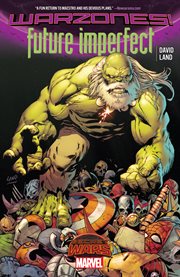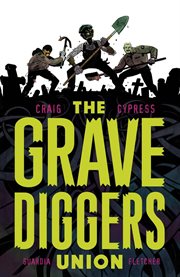Review by New York Times Review
"WHERE ELSE IN the world does one have the freedom to contradict oneself?" Ilan Stavans asks in "A Most Imperfect Union," a witty alternative history of the United States from the arrival of European settlers to the shooting of Trayvon Martin and the Mars rover landing in 2012. It's a prequel to "Latino USA" - his previous collaboration with the illustrator Lalo Alcaraz, a cartoon history of Latino culture in America - and even more ambitious. This time the focus is on "the dispossessed and minority groups of all stripes, as well as individuals known and unknown to most students of American history." What the books have in common, Stavans writes, is "sarcasm." The telling of any nation's entire history, even a young nation's, would be a herculean task, but it's one made even more challenging by the brevity and enforced simplicity of the cartoon form. Happily, it's a challenge Stavans surmounts with his charisma and idiosyncratic perspective. An essayist and scholar of Latin American and Latino culture, as well as a Mexican immigrant who's spent his adult life as an American citizen, he writes from a critical position of the insider/outsider. He and Alcaraz are "proud owners of the fragmented American I. Our heritage is complex and sometimes confusing, but then so is the history of this nation." Their book is a guide for others looking to make sense of this history and land. It's as if the authors are lurking outside the Citizenship and Immigration Services building, whispering, "Here's the real deal." In the best graphic novels and nonfiction, there's a dance between the imagery and the text, with both contributing to the flow of the narrative. Traditionally, images take the lead, and the words, in dialogue or caption, complement the action we have already seen unfolding. But in "A Most Imperfect Union," we see the opposite technique: The prose drives the narrative, and imagery enhances the view along the journey. The illustrations add emphasis to Stavans's historical interpretation, often enlivened by comedic flourishes that leaven his message that "America does indeed have an ugly side: When abundance becomes opulence, morality often falls by the wayside." And the drawings that skirt the margins allow Alcaraz to riff on the history lesson. "Again, too much myth-making for my taste!" he chastises. This running commentary is sometimes complementary, sometimes contrary, but always coated in humor. The overall effect is more evocative of a grand political cartoon than a comic book, with its black-and-white visual style and political approach reminiscent of alternative weekly newspaper strips like Keith Knight's "(Th)ink" or Jen Sorensen's cartoon blocks. Of course, one of the most arresting moments is a splash page with no words at all: The silhouette of a plane heading toward the twin towers. The left-leaning take on power and politics will be familiar to readers of Howard Zinn's "A People's History of the United States" or Ronald Takaki's "A Different Mirror," but what is fresh here is how jubilantly Stavans and Alcaraz use the present to evoke the past. In one section on the European conquest of the Americas, a Native American can be seen at a computer typing "ManifestDestiny.corn." Skulls meant to represent the dead of the Revolutionary War wear tricorn hats branded with the logos of Taco Bell and McDonald's. These are silly jokes, of course, but the humor allows the immense amount of information to go down easily. IF MAJOR EVENTS occasionally receive short shrift - Reconstruction gets a page, the Vietnam War less than that - it's because this is, by design, an idiosyncratic and highly specific project. "A Most Imperfect Union" is not a comprehensive history of the United States, it's the perspective of two "hyphenated Americans" on the place they call home. But it's a lens we're all free to use - the new arrivals as well as those born here, hoping to see their country through fresh eyes. MAT JOHNSON'S books include the graphic novel "Incognegro" and the novel "Pym."
Copyright (c) The New York Times Company [June 29, 2014]
Review by Booklist Review
Professor Stavans and syndicated cartoonist Alcaraz first teamed up to create Latino USA: A Cartoon History (2000), which was both an innovative look at history and a unique foray into graphic nonfiction. Their new sequential art deconstruction of the American mythos, which arises from political and social histories as well as evolving technologies and ethnic-awareness movements, is looser but no less compelling. Set up as a conversation among Stavans, Alcaraz, and a fictional movie director and political pundit, the text and panels explore Pilgrim ideologies, westward expansion, isolationist and superpower postures on the world stage, and many other topics, including whether Huckleberry Finn can withstand cleansing of its n-word, CNN's revolutionizing of news-consumption habits, and the Supreme Court's support of the Affordable Care Act. Alcaraz' bold and brash black-and-white cartoons are hyperbolic while informative, and the full package should give students of history pause, particularly as they consider critical questions regarding well-established facts of history. Edgy, informative, and visually engaging, this would be a good fit for visual learners and iconoclasts.--Goldsmith, Francisca Copyright 2014 Booklist
From Booklist, Copyright (c) American Library Association. Used with permission.
Review by Publisher's Weekly Review
Following up the creators' Latino USA: A Cartoon History (2000), this book demonstrates that comics may be the ideal form to express contrarian thinking-in this case, alternate views of American history. One panel shows a straight portrait of John Quincy Adams penning an 1811 passage that justifies U.S. domination of all North America based on "divine providence," juxtaposed with a modern Latino who observes, "And you Gringos wonder why everyone hates you...." Throughout the book, Amherst professor Stavans and L.A. cartoonist Alcaraz cast their skeptical, sarcastic eyes on the accepted notion of America's steady progress as capably managed by upright white males. Alcaraz gets the point across using the hard-to-miss icons of editorial cartooning with a clean, cartoony style. One disadvantage of the contrarian approach is that it seems to amount to a random smattering of disparaging comments. But that's the point: our history is more complicated than most Americans suppose, shaped by a more diverse swarm of people than we want to imagine. (July) (c) Copyright PWxyz, LLC. All rights reserved.
(c) Copyright PWxyz, LLC. All rights reserved
Review by Kirkus Book Review
Prolific intellectual Stavans and collaborative artist Alcaraz follow up and expand their first exploration of American culture (Latino USA: A Cartoon History, 2000, etc.) to examine the secret history of the United States of America.Stavans and Alcaraz offer an opposing view to the sanitized history most of us were taught in elementary school classrooms. As a Mexican-born Jewish immigrant who moved to the United States in the 1980s, Stavans has a passionate response to the erroneousness of American history. "The past is elastic," he writes. "Its parts shrink and expand depending on who is looking at them and when. Because of this, it's important to take a contrarian's viewpoint, to be wary of what the French call ides fixeslazy unquestioned truths." From this ambitious beginning, Stavans and Alcaraz track the arc of history, from Christopher Columbus' unlikely enterprise to find the new world (he didn't) to the acrimonious relationship between the pilgrims and Native peoples all the way through to our messy, dangerous post-9/11 world. Stavans and Alcaraz examine social movements, pop culture, politics, crime, war and economics, with pithy side comments from the aforementioned peanut gallery. Since it casts its net so wide, it can feel very out of tune from time to time, although Alcaraz's amusing pen-and-ink style ably captures most of the book's famous subjects. Stavans and Alcaraz also aren't afraid to poke a little fun at themselves: "You interject too much out-of-place information! The readers are all confused now," cracks Alcaraz. Nonetheless, well-read students are unlikely to find too many surprises here. While it makes for an entertaining afternoon, it's still mostly a surface-level history lesson with a few iconoclastic opinions added in for spice.A history book that wants to be Howard Zinn's A People's History of American Empire but comes off more like Larry Gonick's The Cartoon History of the United States with more savvy jokes. Copyright Kirkus Reviews, used with permission.
Copyright (c) Kirkus Reviews, used with permission.



